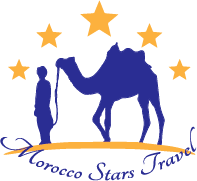Best Morocco rugs and carpets 2024
Moroccan tribes have many Morocco rugs and carpets weaving style
The Berber clans and other Moroccan travelers wove mats to use as seat covers, tent sides and covers, dozing mats and covers. Thick covers of normal fleece gave warmth while more slender carpets were lighter and simpler to ship and to wear. Moroccan weaving turned out to be more beautiful as the desert and mountain individuals fused plant, bug and mineral colors into their plans. Yet, the genuine creativity of the mat depended on ability and strategy, regularly went down through ages.
Fundamentals of Rug Weaving
Hand-lingered mats are woven on fixed or spinning outlines. The twist strings are extended upward and structure the spine or construction of the material. The weft strings are disregarded and under, or all through the twist evenly to make an example. On a decent loom, the mat can be just as long as the casing. A rotating outline allows the weaver to move completed areas around the base dowel of the loom for fluctuating lengths. Each time the weaver elapses the weft across the twist, the line is thrashed to fix the material. Gifted weavers are craftsmen who create their own examples and methods, blend customary procedures and play in with tones and plans. Moroccan carpet weaving acquires methods from everywhere the Middle East and Northern Africa however there are a couple of extremely normal weaving styles.
Hitched
A tightly woven pile rug is warm because it traps air between the yarns, unlike a thin, flat-weave carpet. To create this rug, a few weft threads are woven across the warp and secured to form a stable base for the raised pile knots. The weaver then loops extra weft yarn around the warp, catching at least two warp threads, and ties knots across the width of the fabric.
The weaving process continues with additional weft threads added across the raised warp threads, interspersed with rows of knotted yarn. The design and desired thickness of the rug determine how many weft passes the weaver makes between knot rows. When reaching the end of the rug’s length, another row of plain weft weaving secures the knotted design. The weaver can trim knots as they progress, or they can even out the pile before removing the fabric from the loom. Sometimes, a different craftsman, known as a finisher, handles this task.
Level Weave
Level weave includes strands of weft yarn bound all through the twist strings and pounded to make a nearby, even material. This method was broadly utilized for the floor coverings of the hot swamp and desert spaces of Morocco. There are no bunches, so level weave mats lay more slender than heap cover yet may highlight exceptionally complicated plans. Stripes and chevrons are normal plans, however fine weavers make carpets that nearly take after embroideries in their intricacy. The expansion of tied or weaved areas can shift the examples, and the shadings range from distinctive tones to undyed natural whites, off-whites, grays, tans, and blacks. A crude style known as Oued Zem features brilliant shadings and creature, toy, or family themes. People also refer to these as “kids’ floor coverings,” which are eye-catching but not quite as professionally woven as more traditional styles. Morocco rugs and carpets
Weft Substitution. Morocco rugs and carpets . Morocco rugs and carpets
Weft replacement, a unique weaving technique, creates intricate designs on rugs. Moroccan weavers use different colored weft threads on the loom’s rear, resulting in a seamless pattern on the front. The back may have floating threads for added texture. Some weavers trim these threads, leaving short remnants. This technique’s color variations enable artists to craft detailed designs on a tightly woven rug.





